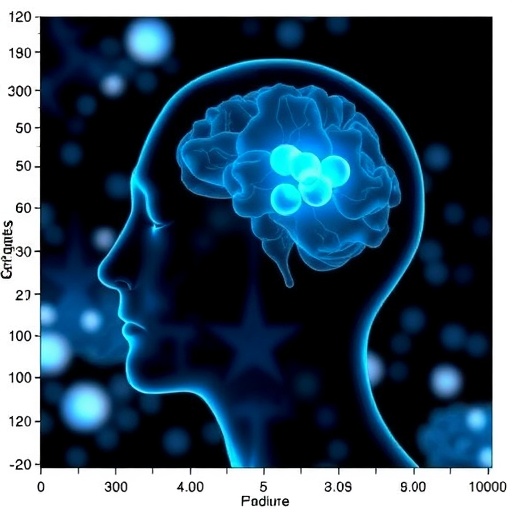In a groundbreaking development that could revolutionize psychiatric diagnostics, researchers have unveiled an innovative approach leveraging natural variations in lithium isotopes within the bloodstream to distinguish between schizophrenia and bipolar disorder. This pioneering work, published recently in Translational Psychiatry, offers a novel biomarker that may dramatically enhance the precision of differentiating these two complex and often overlapping mental health conditions.
Accurately diagnosing schizophrenia and bipolar disorder has long posed a significant challenge for clinicians due to the shared symptomatology and heterogeneity of presentations. Traditional diagnostic methods rely heavily on symptomatic observation and clinical interviews, which can be subjective and vary between practitioners. This diagnostic ambiguity not only complicates treatment strategies but also affects patient outcomes. The new study harnesses isotope geochemistry techniques applied to biomedical science, highlighting an extraordinary interdisciplinary leap.
Central to this research is lithium, a widely used mood stabilizer particularly effective in managing bipolar disorder. Lithium’s therapeutic properties have been extensively studied, yet the subtle variations of lithium isotopes in human serum following administration have never been fully explored as a diagnostic tool until now. Lithium exists naturally as two stable isotopes, ^6Li and ^7Li, and their relative abundances can vary slightly but measurably. The team investigated whether these isotope ratios could reflect underlying biochemical or metabolic differences unique to each disorder.
The researchers administered controlled doses of lithium to individuals diagnosed with schizophrenia and bipolar disorder, then conducted precise isotopic ratio analyses on serum samples using high-resolution mass spectrometry. The study found compelling evidence that the lithium isotope signature differed markedly between the two groups. Specifically, the isotopic ratio shifts appeared to correlate with distinct pathophysiological mechanisms at play in each condition, suggesting lithium isotopes could serve as sensitive indicators of differential disease states.
This methodological innovation combines clinical psychiatry with isotope geochemistry, enabling a biomarker approach that minimizes reliance on subjective symptom reporting. Serum lithium isotopic variations offer potential as a non-invasive, objective, and quantifiable means to improve diagnostic accuracy. This is particularly significant since early and accurate differentiation guides more effective and personalized treatment plans, optimizing patient care and prognosis.
Further, these findings may shed light on underlying biochemical differences between schizophrenia and bipolar disorder. While both conditions involve complex neurochemical dysregulation, the isotopic data suggest lithium interacts differentially within the metabolic pathways altered in each disorder. This could open new avenues of research into the molecular underpinnings and potentially reveal novel therapeutic targets or pathways influenced by lithium treatment.
The study employed rigorous controls and statistical analyses, ensuring that observed isotopic variations were robust and reproducible. Blood samples were collected at standardized times post-lithium administration to control for pharmacokinetic fluctuations. Additionally, confounding factors such as age, medication status, and duration of illness were carefully matched between cohorts to isolate the lithium isotopic signal pertinent to disease differentiation.
Experts in psychiatry and biochemistry have lauded the study for its translational potential, noting that the fusion of isotopic science with psychiatric diagnosis marks an unprecedented advancement. The approach could pave the way for new diagnostic protocols incorporating isotope ratio mass spectrometry in clinical settings, provided further validation in larger, multi-center cohorts confirms these results.
Moreover, the precision of lithium isotope measurements could extend beyond diagnosis into therapeutic monitoring. Adjusting lithium dosage based on isotopic biomarker feedback may optimize drug efficacy and minimize adverse effects, enhancing personalized medicine approaches in psychiatric care. This aligns with emerging trends in integrating quantitative biological markers to transcend traditional symptom-based treatment paradigms.
The researchers emphasize that while promising, the lithium isotope biomarker is not intended to replace comprehensive psychiatric evaluation but to complement existing diagnostic frameworks. Integration into clinical practice would require standardized protocols for serum collection, isotopic analysis, and interpretation. Training for clinicians in understanding isotopic data will also be necessary to translate findings into actionable clinical decisions.
Future directions include expanding this research to explore whether lithium isotopic variation patterns exist in other psychiatric or neurological disorders, potentially broadening the scope of isotope-based diagnostics. Studies investigating the mechanistic basis of isotope fractionation in brain and peripheral tissues could elucidate how lithium interacts differentially across neural substrates implicated in mental illness.
Additionally, the development of portable or more accessible mass spectrometry technologies could democratize the use of lithium isotope measurement, facilitating adoption in diverse healthcare settings beyond specialized research institutions. This technology-driven shift could fundamentally change how mental health disorders are diagnosed and managed worldwide.
The study’s interdisciplinary approach exemplifies the power of combining advanced chemical analysis with neuropsychiatric medicine, heralding a future where biological precision complements the art of psychiatry. As the medical community grapples with diagnostic complexities and strives to personalize treatment, the discovery of lithium isotope variations as a novel biomarker stands as a beacon of innovation.
In conclusion, this pioneering research presents a compelling case for the incorporation of lithium isotope ratio analysis as a transformative tool in mental health diagnostics. By providing an objective, reproducible, and physiologically relevant biomarker, the study offers hope for improved clinical outcomes for millions affected by schizophrenia and bipolar disorder. The integration of such cutting-edge science into psychiatric practice may soon change the landscape of mental health care forever.
Subject of Research: Diagnostic differentiation of schizophrenia and bipolar disorder using lithium isotope variations in serum.
Article Title: Natural lithium isotope variations in serum after lithium administration as a novel biomarker for differentiating schizophrenia and bipolar disorder.
Article References:
Dong, J., Zhong, B., Yao, J. et al. Natural lithium isotope variations in serum after lithium administration as a novel biomarker for differentiating schizophrenia and bipolar disorder. Transl Psychiatry 15, 386 (2025). https://doi.org/10.1038/s41398-025-03627-6
Image Credits: AI Generated




